
Health coverage company Centene (NYSE: CNC) announced better-than-expected revenue in Q3 CY2025, with sales up 18.2% year on year to $49.69 billion. Its non-GAAP profit of $0.50 per share was significantly above analysts’ consensus estimates.
Is now the time to buy Centene? Find out by accessing our full research report, it’s free for active Edge members.
Centene (CNC) Q3 CY2025 Highlights:
- Revenue: $49.69 billion vs analyst estimates of $47.92 billion (18.2% year-on-year growth, 3.7% beat)
- Adjusted EPS: $0.50 vs analyst estimates of -$0.16 (significant beat, figure includes a $0.10 benefit of a low adjusted effective tax rate in the quarter)
- Adjusted EBITDA: -$6.76 billion vs analyst estimates of -$204.8 million (-13.6% margin, significant miss)
- Adjusted EPS guidance for the full year is $2 at the midpoint, beating analyst estimates by 19.6%
- Operating Margin: -14%, down from 1.6% in the same quarter last year
- Free Cash Flow was $1.15 billion, up from -$1.13 billion in the same quarter last year
- Customers: 27.97 million, down from 28 million in the previous quarter
- Market Capitalization: $16.3 billion
"Our third quarter results and increased full year outlook demonstrate tangible progress against the near-term milestones we laid out for investors in July," said Chief Executive Officer of Centene, Sarah M. London.
Company Overview
Serving nearly 1 in 15 Americans through its government healthcare programs, Centene (NYSE: CNC) is a healthcare company that manages government-sponsored health insurance programs like Medicaid and Medicare for low-income and complex-needs populations.
Revenue Growth
Reviewing a company’s long-term sales performance reveals insights into its quality. Even a bad business can shine for one or two quarters, but a top-tier one grows for years. Over the last five years, Centene grew its sales at a solid 12.8% compounded annual growth rate. Its growth beat the average healthcare company and shows its offerings resonate with customers, a helpful starting point for our analysis.
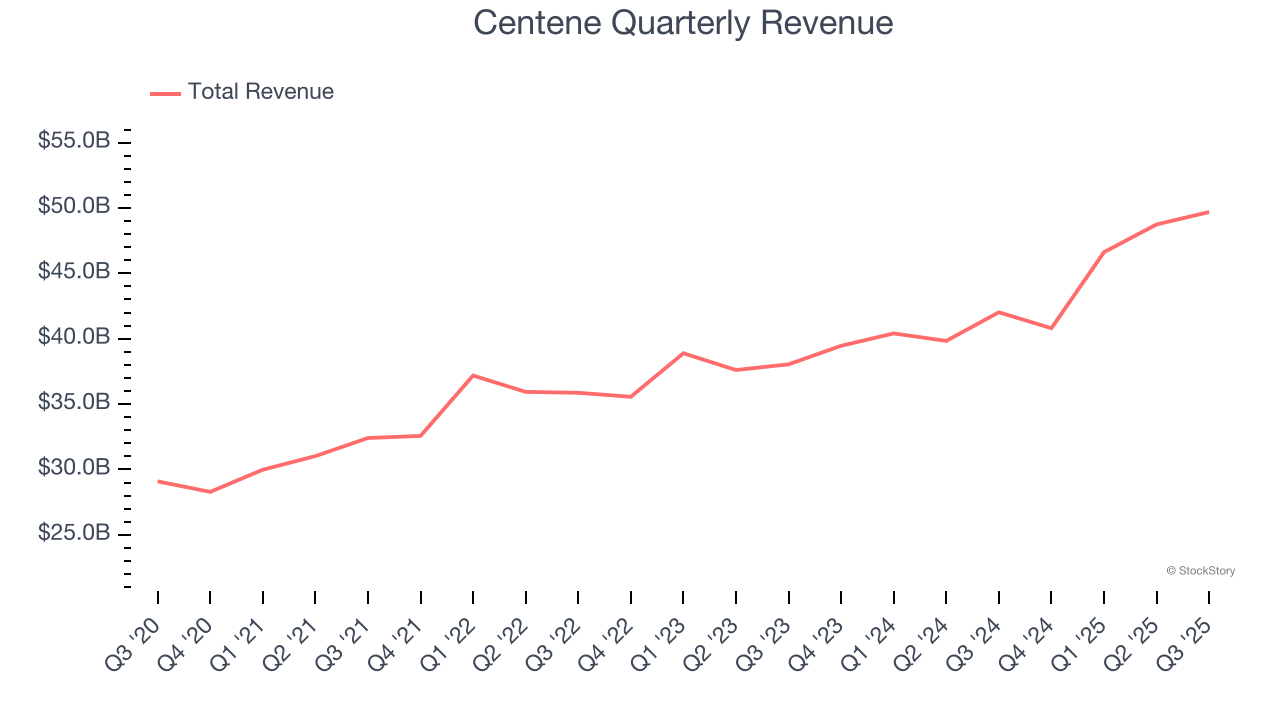
Long-term growth is the most important, but within healthcare, a half-decade historical view may miss new innovations or demand cycles. Centene’s annualized revenue growth of 11.3% over the last two years is below its five-year trend, but we still think the results were respectable. 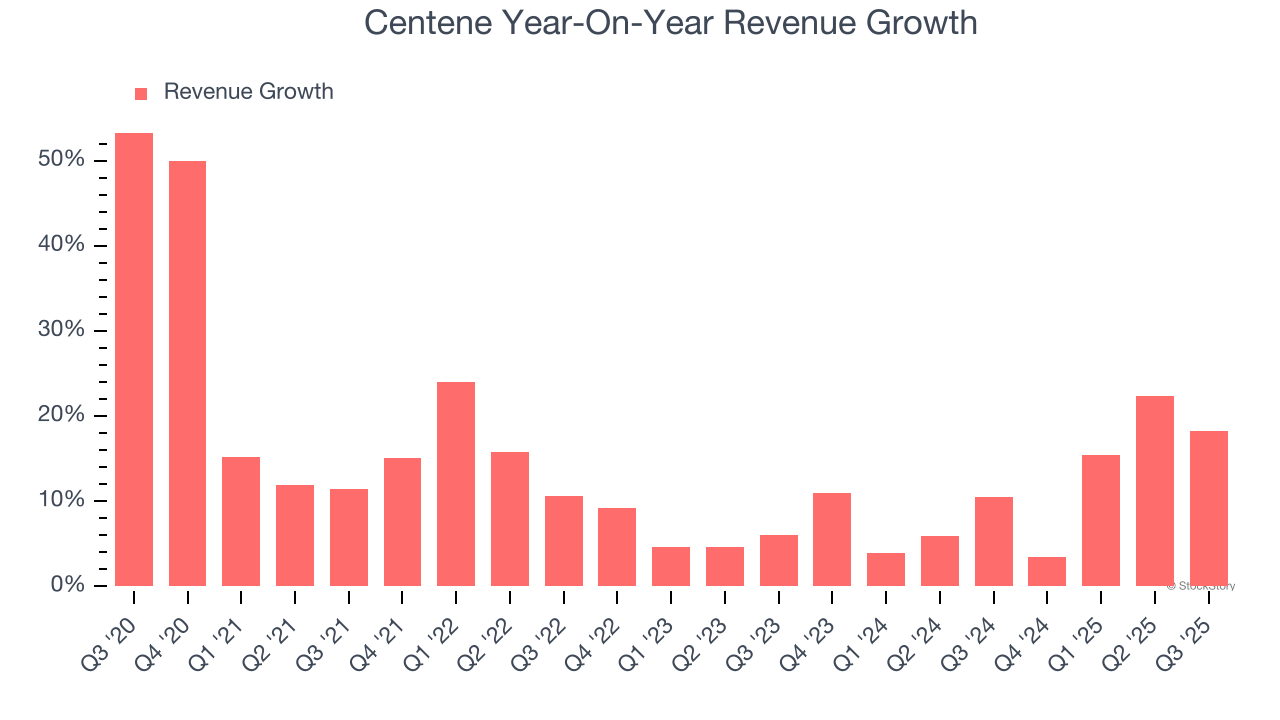
We can better understand the company’s revenue dynamics by analyzing its number of customers, which reached 27.97 million in the latest quarter. Over the last two years, Centene neither added nor lost customers. Because this number is lower than its revenue growth, we can see the average customer spent more money each year on the company’s products and services. 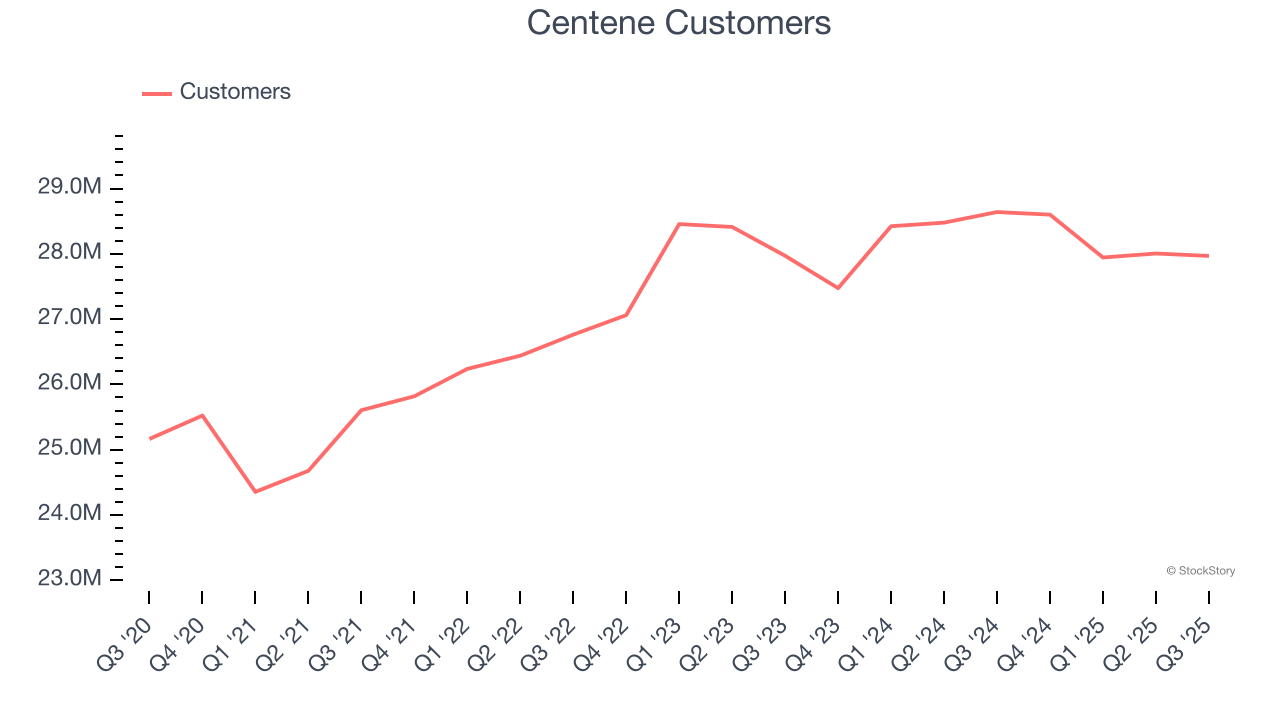
This quarter, Centene reported year-on-year revenue growth of 18.2%, and its $49.69 billion of revenue exceeded Wall Street’s estimates by 3.7%.
Looking ahead, sell-side analysts expect revenue to grow 2.6% over the next 12 months, a deceleration versus the last two years. This projection doesn't excite us and indicates its products and services will face some demand challenges. At least the company is tracking well in other measures of financial health.
Today’s young investors won’t have read the timeless lessons in Gorilla Game: Picking Winners In High Technology because it was written more than 20 years ago when Microsoft and Apple were first establishing their supremacy. But if we apply the same principles, then enterprise software stocks leveraging their own generative AI capabilities may well be the Gorillas of the future. So, in that spirit, we are excited to present our Special Free Report on a profitable, fast-growing enterprise software stock that is already riding the automation wave and looking to catch the generative AI next.
Operating Margin
Operating margin is a key measure of profitability. Think of it as net income - the bottom line - excluding the impact of taxes and interest on debt, which are less connected to business fundamentals.
Centene was roughly breakeven when averaging the last five years of quarterly operating profits, lousy for a healthcare business.
Looking at the trend in its profitability, Centene’s operating margin decreased by 4.1 percentage points over the last five years. The company’s two-year trajectory also shows it failed to get its profitability back to the peak as its margin fell by 5 percentage points. This performance was poor no matter how you look at it - it shows its expenses were rising and it couldn’t pass those costs onto its customers.
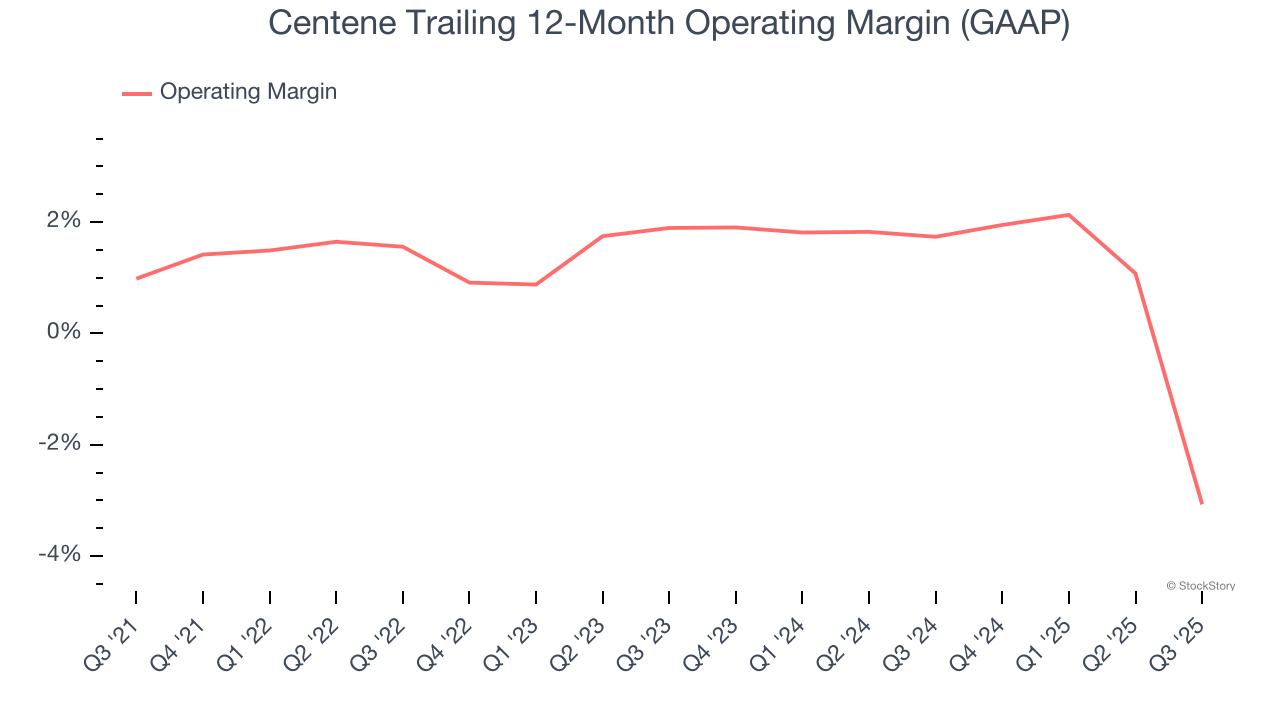
In Q3, Centene generated an operating margin profit margin of negative 14%, down 15.6 percentage points year on year due to a $6.7 billion non-cash goodwill impairment, resulting in a GAAP loss and corresponding reduction of retained earnings in the third quarter of 2025.
Earnings Per Share
Revenue trends explain a company’s historical growth, but the long-term change in earnings per share (EPS) points to the profitability of that growth – for example, a company could inflate its sales through excessive spending on advertising and promotions.
Sadly for Centene, its EPS declined by 5.1% annually over the last five years while its revenue grew by 12.8%. This tells us the company became less profitable on a per-share basis as it expanded due to non-fundamental factors such as interest expenses and taxes.
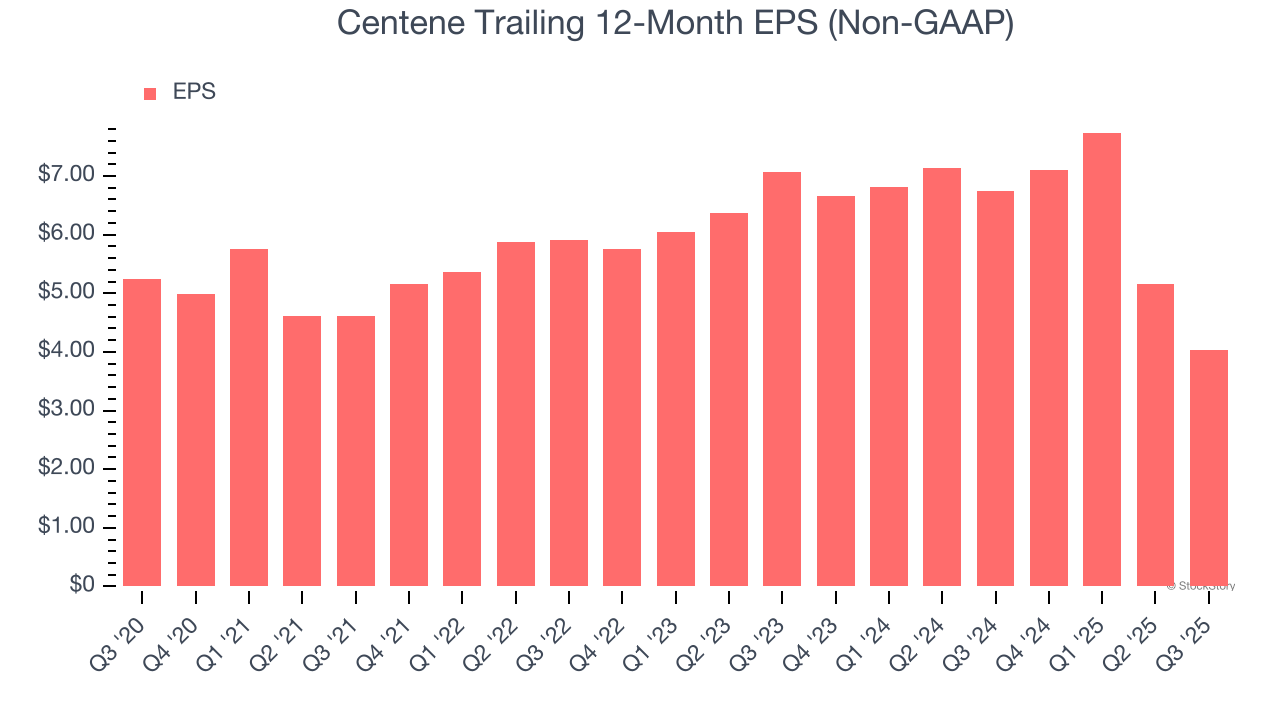
Diving into the nuances of Centene’s earnings can give us a better understanding of its performance. As we mentioned earlier, Centene’s operating margin declined by 4.1 percentage points over the last five years. This was the most relevant factor (aside from the revenue impact) behind its lower earnings; interest expenses and taxes can also affect EPS but don’t tell us as much about a company’s fundamentals.
In Q3, Centene reported adjusted EPS of $0.50, down from $1.62 in the same quarter last year. Despite falling year on year, this print easily cleared analysts’ estimates. Over the next 12 months, Wall Street expects Centene’s full-year EPS of $4.04 to shrink by 42.4%.
Key Takeaways from Centene’s Q3 Results
It was good to see Centene beat analysts’ revenue and EPS expectations this quarter. We were also excited its full-year EPS guidance outperformed Wall Street’s estimates by a wide margin. Zooming out, we think this quarter featured some important positives. The stock traded up 10.8% to $36.77 immediately after reporting.
Centene put up rock-solid earnings, but one quarter doesn’t necessarily make the stock a buy. Let’s see if this is a good investment. We think that the latest quarter is only one piece of the longer-term business quality puzzle. Quality, when combined with valuation, can help determine if the stock is a buy. We cover that in our actionable full research report which you can read here, it’s free for active Edge members.








